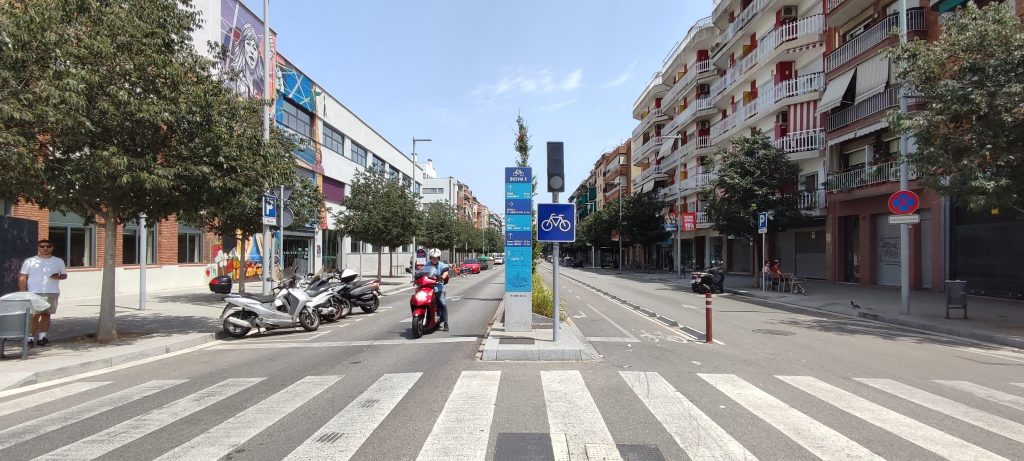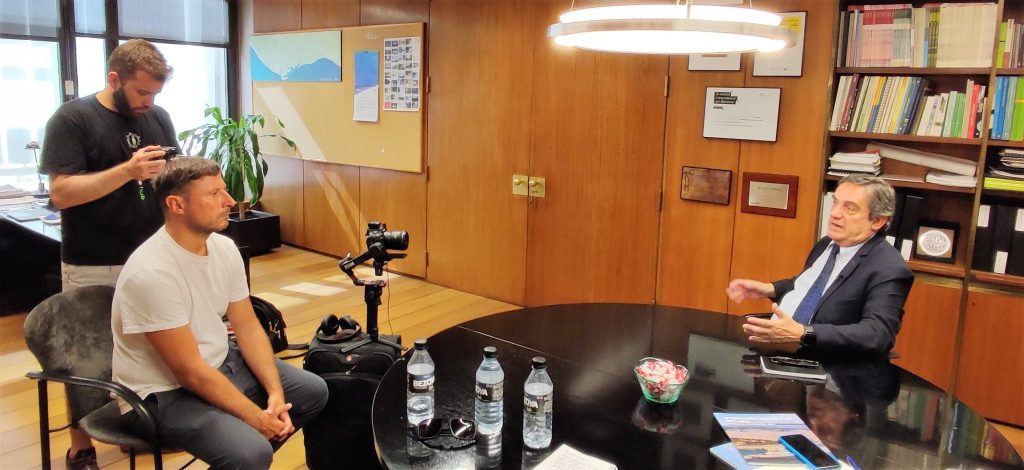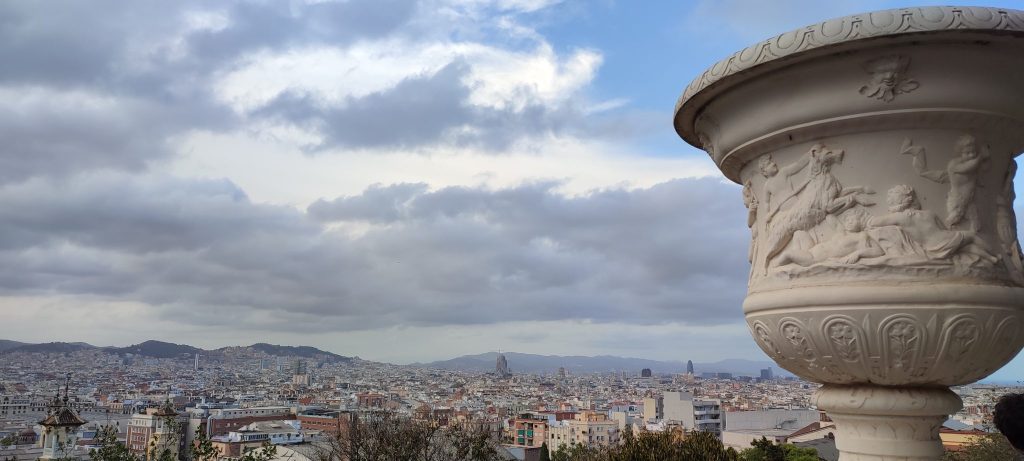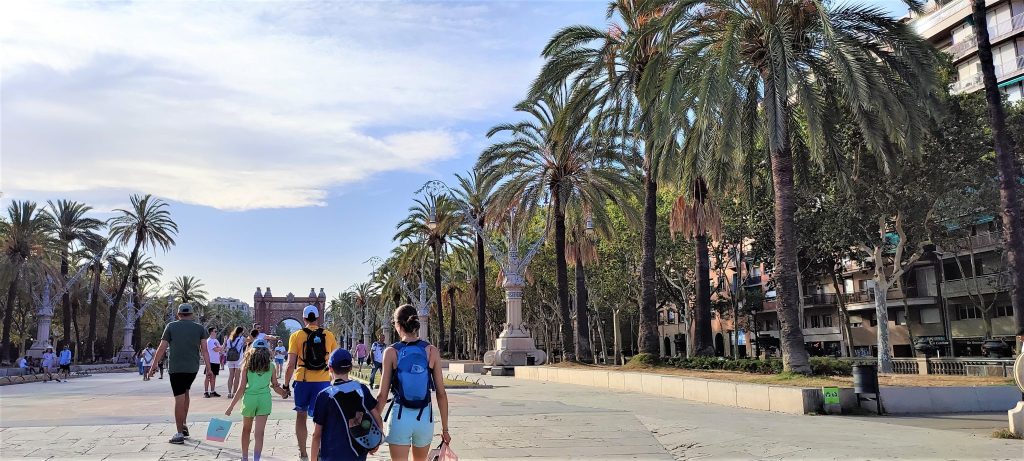For a week, the UrbanizeHub team traveled to the Spanish Mediterranean coast to learn more about the Barcelona Metropolitan Area. We spoke to 30 experts from various fields, from management and international relations to urban planning and waste management, we traveled a total of 700 km through seven municipalities to see how the project written on paper becomes reality. Now is the time to tell further what we learned from the Área Metropolitana de Barcelona.
Área Metropolitana de Barcelona, AMB for short, is the entity that deals with everything that means the management of public services of interest to the metropolitan area. Metropolitan transport, buildings, parks, educational and social services and others fall under the administration of AMB. 36 municipalities are part of the metropolitan area, each having a mayor as a member of the Metropolitan Council and then local councillors. In total, there are 90 members who meet monthly to discuss and debate projects of interest to citizens.
Major problems can be solved through collaboration
To better understand the impact that an association between cities can have on macro issues, we can talk about pollution. The area is between the sea and the mountains. This means that air with CO2 produced from various sources remains concentrated and is inhaled daily by citizens. Two big polluters are the El Prat airport and the port, which are under the national administration and for which legislative frameworks cannot be created at regional level. What AMB did was to focus on transport and buildings.
The Barcelona Metropolitan Area has 95 km² of low emission areas. This translates into the fact that there are speed limits of 20 or 30 km/h, every car has a sticker with the pollution norm and is not allowed to enter that area if it does not meet the standards. Much emphasis has been placed on the creation of bicycle lanes, the expansion of pedestrian areas and the purchase of hybrid or electric buses. The process is a long one, but from the first results we see that there are reductions in the level of pollution indices. People who choose to keep their driving status and own a car have scrapped their old cars (11,000 in the last 2 years) that didn’t allow them to travel through low-emission zones and bought newer, more efficient ones with fuel consumption.

What AMB is trying to do is to start a change in mentality, one in which people feel much more comfortable traveling by bus, metro or on foot. To encourage people to cycle from home to work or wherever they need, a bikesharing system has been implemented for residents of the metropolitan area that works on the basis of ID. The tracks were designed as a space separated from the street and clearly delimited by curbs, stops or palm trees, precisely so that people feel safe.
The General Director of AMB, Ramon Torra, told us how the rapid transport infrastructure integrates with the already existing one. It is very important for a man to know from the moment he wakes up that he can quickly get to work or take his children to school and then continue on his way to work. The concept of the 15-minute city is a utopia when we are talking about metropolises of hundreds of thousands or millions of people, but that does not mean that on a personal level, in everyday life, this cannot be achieved. The Barcelona Metropolitan Area is investing heavily in this and has made mobility a main objective in the medium and long term.

Collaboration is a tradition of generations
AMB manages an annual budget of 2.3 billion euros. This fund is mostly made up of resource transfers from municipalities to the city, followed by taxes paid by citizens and funds coming from the government. Barcelona is the biggest contributor among all 36 municipalities. Being the largest city in the Metropolitan Area, it also has the most councilors at the AMB level. Ramon Torra, the current general manager, was elected by the 90 members of the AMB Council, who in turn were voted by the citizens. Currently, there are four parties that have representatives through councilors and mayors in the council.
The question from which we start the discussion about collaboration is: why? Why does Barcelona agree to send hundreds of millions to an organization year after year?
The answer given to us by Xavier Tiana, the director of the international relations department, is history. For 40 years there were different authorities dealing with regional issues. Transport, environmental, waste management and so on. In 2010 all these merged into AMB. Municipalities understood that only together they can develop harmoniously and provide quality of life for people, so they built on this culture of collaboration. Barcelona understood that if it wanted to avoid the problem of overcrowding and all the problems it brings, it had to help the surrounding municipalities to provide equal opportunities for their residents.
This is unfortunately not widely understood. This leads to competitions in which cities, feeling that more people means more funds, fight a battle with fewer winners than if they went along with a project like functional urban areas.

We will tell in future articles about each project we visited that was a model of good practice and a source of inspiration for us. We hope it will have the same effect on those who will read about them, perhaps for the first time.
Before we conclude this article, we would like to send a warm thank you to our partners at AMB.
Moltes gràcies per la meravellosa acollida i les coses que ens vas ensenyar!
This article is part of the EU Commission project Functional Areas in the EU






